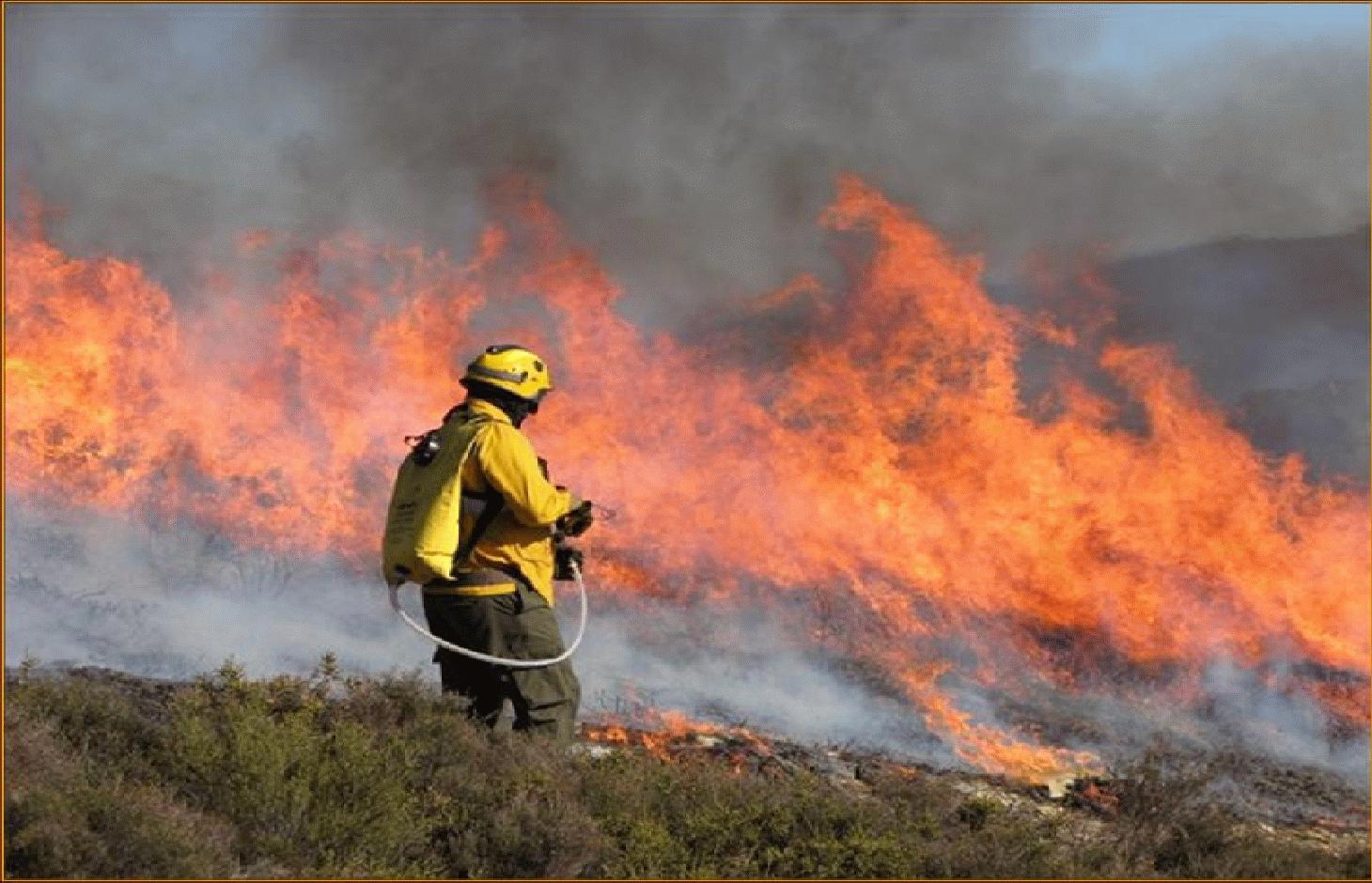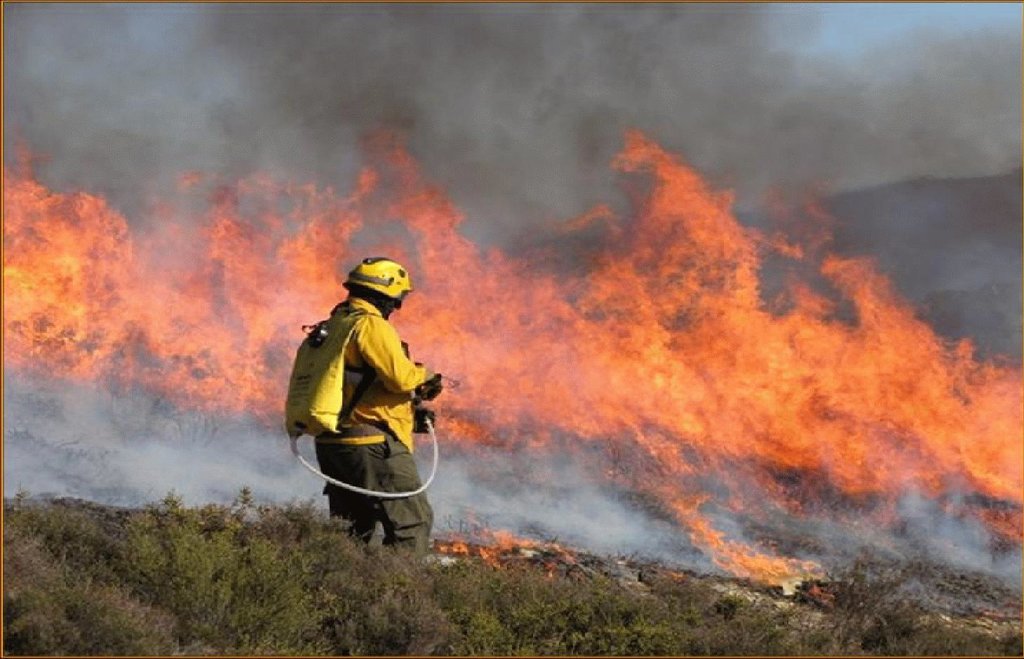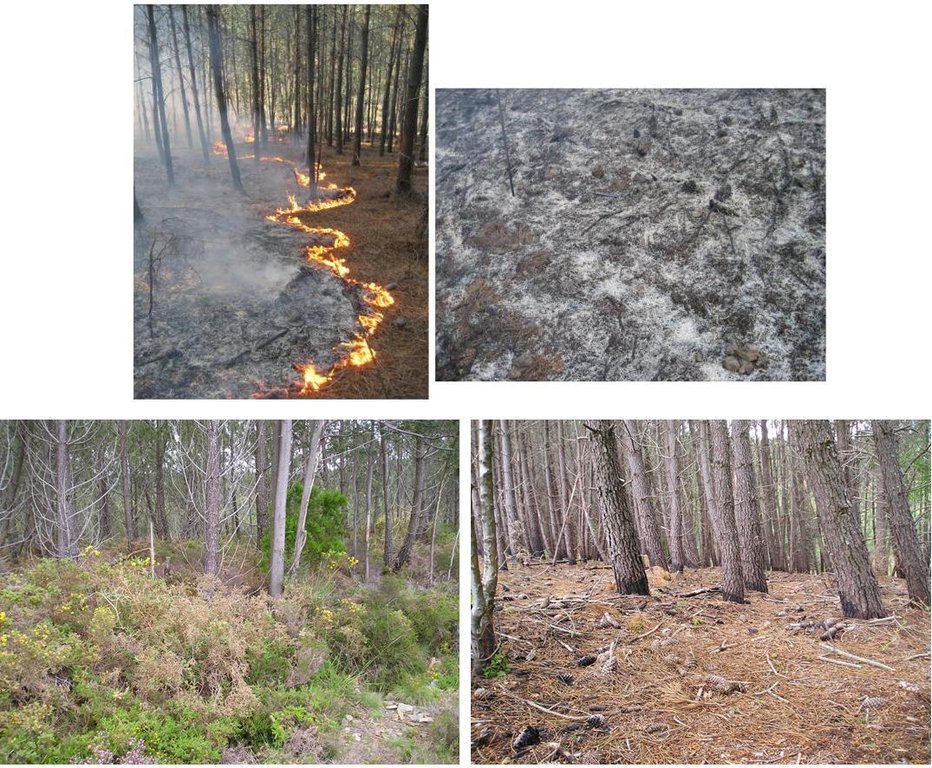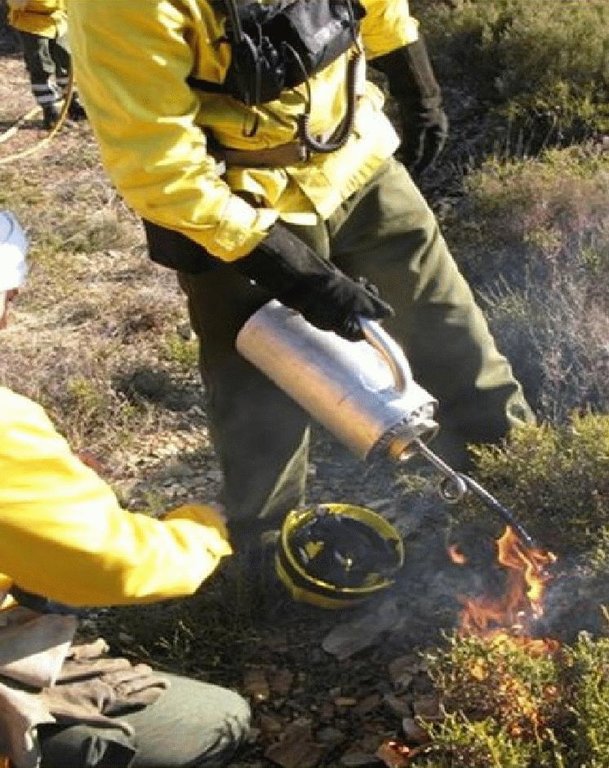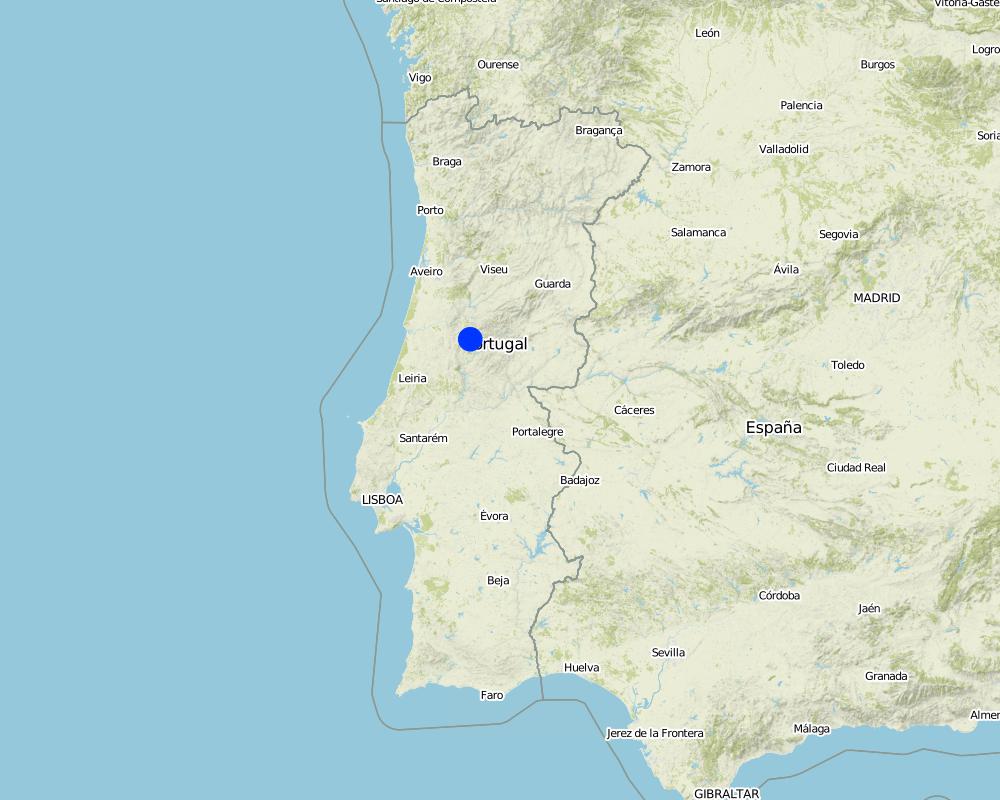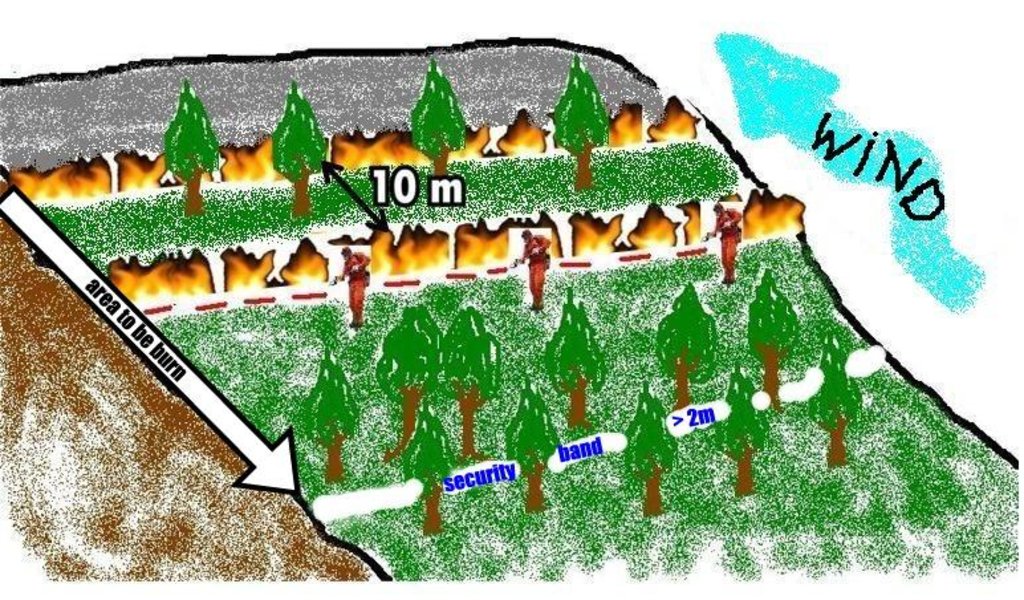Prescribed fire [Portugal]
- Création :
- Mise à jour :
- Compilateur : Manuela Carreiras
- Rédacteur : –
- Examinateurs : Deborah Niggli, Alexandra Gavilano
Fogo Controlado
technologies_1534 - Portugal
Voir les sections
Développer tout Réduire tout1. Informations générales
1.2 Coordonnées des personnes-ressources et des institutions impliquées dans l'évaluation et la documentation de la Technologie
Spécialiste GDT:
Nom du projet qui a facilité la documentation/ l'évaluation de la Technologie (si pertinent)
DESIRE (EU-DES!RE)Nom du ou des institutions qui ont facilité la documentation/ l'évaluation de la Technologie (si pertinent)
Centro de Estudos de Rescursos Naturais, Ambiente e Sociedade (CERNAS) - Portugal1.3 Conditions relatives à l'utilisation par WOCAT des données documentées
Le compilateur et la(les) personne(s) ressource(s) acceptent les conditions relatives à l'utilisation par WOCAT des données documentées:
Oui
1.5 Référence au(x) Questionnaires sur les Approches de GDT (documentées au moyen de WOCAT)
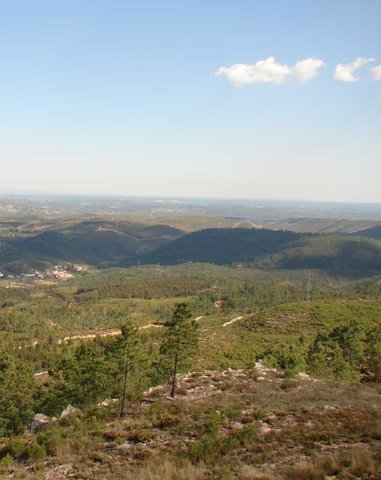
Forest Intervention Area (ZIF) [Portugal]
Forest Intervention Area (ZIF) is a territorial unit, where the main land use is forestry. This approach assembles and organizes small forest holders and defines a joint intervention for forest management and protection. Defined by law in 2005, and revised in 2009, each ZIF of private forest has to include …
- Compilateur : Celeste Coelho
2. Description de la Technologie de GDT
2.1 Courte description de la Technologie
Définition de la Technologie:
Use of prescribed fire (or ‘controlled burn’) to reduce the fuel load in the form of live and dead plant material and thus to prevent the likelihood of more damaging wildfire.
2.2 Description détaillée de la Technologie
Description:
This technique is an essential management tool that applies fire to control the quantity of forest or scrubland fuels. The type of fire depends on the specific goals and on the weather conditions. Firstly, it is important to consider slope angle and the kind of fuels to be burned. Weather conditions include temperature, wind direction and air humidity. Another important aspect is the ability to control the speed of flame spread. In order to carry out the controlled fire, a plan has to be drawn up and approved and a fully-trained, authorised technician must be present in addition to the appropriate support teams (fire fighters, forest management teams). These teams use water or other means of combating the fire in the event of it possibly getting out of control and are in charge of the burning process.
Purpose of the Technology: The main purposes are enhancement of grazing areas and the creation of the so-called primary network for wildfire defence, which is a national network to limit the spread of wildfire. It involves strategically burning key sites (e.g. mountain ridges) to restrict the spread of the wildfire.
Establishment / maintenance activities and inputs: An analysis of weather conditions is made prior to carry out the prescribed fire. On the day of the prescribed fire itself, safety checks are made and the specific tasks of all the team members are defined. Wind direction and strength need to be minimal and are strictly controlled during burning. The size of the team depends on the specific problems of the area to be treated. Team size needed for about 10 ha is around 10 persons. The team members start along a line working from the top on the mountain along the contour and move downwards. Gentle breeze should be against the direction of the spreading of the fire. Workers use a drip-feed fuel can. There is also a strategy for prescribed fires by burning a strip along ridges of the mountains to avoid spreading of accidental wildfires and to burn in catchments the lowest point from which fire can spread to different areas and spread in different directions on the slopes.
Natural / human environment: Improved grazing management might also reduce the fuel load. Abandoning grazing in the forest can increase the fuel load and aggravate the occurrence and impact of wildfires. The creation or maintenance of grazing areas is determined by the size of the herd. Prescribed fire used as a means of improving grazing enables the local population needs to be addressed while considering environmental concerns. The prescribed fire also helps to protect the local population and their property by reducing the likelihood of devastating wildfire.
2.3 Photos de la Technologie
2.5 Pays/ région/ lieux où la Technologie a été appliquée et qui sont couverts par cette évaluation
Pays:
Portugal
Région/ Etat/ Province:
Castanheira de Pêra
Autres spécifications du lieu:
Leiria
Spécifiez la diffusion de la Technologie:
- répartie uniformément sur une zone
Si la Technologie est uniformément répartie sur une zone, précisez la superficie couverte (en km2):
0,57
Commentaires:
Total area covered by the SLM Technology is 0.57 km2.
Map
×2.6 Date de mise en œuvre de la Technologie
Si l'année précise est inconnue, indiquez la date approximative: :
- il y a plus de 50 ans (technologie traditionnelle)
2.7 Introduction de la Technologie
Spécifiez comment la Technologie a été introduite: :
- dans le cadre d'un système traditionnel (> 50 ans)
3. Classification de la Technologie de GDT
3.2 Type(s) actuel(s) d'utilisation des terres, là où la Technologie est appliquée

Pâturages
Pâturage extensif:
- Pastoralisme de type semi-nomade

Forêts/ bois
- Shrublands/pasture
Produits et services:
- Bois d'œuvre (de construction)
- Pâturage/ broutage
Commentaires:
Major land use problems (compiler’s opinion): The problem is linked to the loss of traditional natural pasture use. Since there is nowadays no grazing/pasture use of forests, the fuel load remains uncontrolled. It is also linked to minimising wildfire impacts and the creation of grazing land. As more people visit forest areas for leisure and accidentally set fire. Another problem is vandalism and arson.
Semi-nomadism / pastoralism: Yes
Other type of forest: Shrublands/pasture
Forest products and services: timber, grazing / browsing
Livestock density: < 1 LU/km2
3.4 Approvisionnement en eau
Approvisionnement en eau des terres sur lesquelles est appliquée la Technologie:
- pluvial
3.5 Groupe de GDT auquel appartient la Technologie
- gestion des forêts naturelles et semi-naturelles
- Prescribed fire
3.6 Mesures de GDT constituant la Technologie

modes de gestion
- M5: Contrôle/ changement de la composition des espèces
Commentaires:
Main measures: management measures
3.7 Principaux types de dégradation des terres traités par la Technologie

dégradation biologique
- Bf: effets néfastes des feux
Commentaires:
Main type of degradation addressed: Bf: detrimental effects of fires
Main causes of degradation: deforestation / removal of natural vegetation (incl. forest fires), other natural causes (avalanches, volcanic eruptions, mud flows, highly susceptible natural resources, extreme topography, etc.) specify (Wildfire), population pressure (An decline of population during the last decades resulting in less grazing contributes to increased wildfire risk.)
3.8 Prévention, réduction de la dégradation ou réhabilitation des terres dégradées
Spécifiez l'objectif de la Technologie au regard de la dégradation des terres:
- réduire la dégradation des terres
Commentaires:
Main goals: mitigation / reduction of land degradation
4. Spécifications techniques, activités, intrants et coûts de mise en œuvre
4.1 Dessin technique de la Technologie
Spécifications techniques (associées au dessin technique):
Prescribed fire is a practice used to manage vegetation in wildfire-prone areas. It consists of slowly burning strategic areas in the wet season, under specific weather and ground conditions and procedures: the soil should be moist, burning typically carried out in thin strips (normally 10m distance between two fire lines) from the top to the bottom of the slope, there should be only a gentle breeze blowing upslope and the ignition points should be 2m apart along the contour. The fire is allowed to progress downslope against the wind, which therefore provides some control. Burning is achieved by a number of the team who are prepared to dowse the flames if the fire gets out of hand. This degree of control is only possible when burning small areas with the same slope angle.
Location: Castanheira de Pêra. Leiria, Portugal
Date: January, 2009
Technical knowledge required for field staff / advisors: high (Specific training)
Technical knowledge required for land users: low
Technical knowledge required for Fire men: moderate
Main technical functions: control of fires, reduction of dry material (fuel for wildfires), spatial arrangement and diversification of land use
Secondary technical functions: control of dispersed runoff: impede / retard, increase of infiltration
Layout change according to natural and human environment
Auteur:
Adapted from Pedro Palheiro
4.2 Informations générales sur le calcul des intrants et des coûts
autre/ monnaie nationale (précisez):
EURO
Indiquez le taux de change des USD en devise locale, le cas échéant (p.ex. 1 USD = 79.9 réal brésilien): 1 USD = :
136,94
Indiquez le coût salarial moyen de la main d'œuvre par jour:
100.00
4.3 Activités de mise en place/ d'établissement
| Activité | Calendrier des activités (saisonnier) | |
|---|---|---|
| 1. | Planning and implementation | 1 morning (5h) |
| 2. | Fire control equipment | |
| 3. | Monitoring prescribed fire | 1 morning (5h) |
4.4 Coûts et intrants nécessaires à la mise en place
| Spécifiez les intrants | Unité | Quantité | Coûts par unité | Coût total par intrant | % des coût supporté par les exploitants des terres | |
|---|---|---|---|---|---|---|
| Main d'œuvre | Labour | ha | 1,0 | 25,0 | 25,0 | |
| Equipements | Machine use | ha | 1,0 | 25,0 | 25,0 | |
| Coût total de mise en place de la Technologie | 50,0 | |||||
| Coût total de mise en place de la Technologie en dollars américains (USD) | 0,37 | |||||
4.5 Activités d'entretien/ récurrentes
| Activité | Calendrier/ fréquence | |
|---|---|---|
| 1. | No maintenance is necessary. Every 3 to 5 years, prescribed fire is carried out again, repeating the process described abovet. | On 3-4 or 4-5 years |
4.6 Coûts et intrants nécessaires aux activités d'entretien/ récurrentes (par an)
Commentaires:
Calculation of costs has been made based on the prescribed fire conducted for the DESIRE project. They represent the costs to burn 3-4ha, during a morning and including human resources (12 people), equipment (fire torch, fuel, special fire protection clothing, scythes, and hoses) and specialized fire fighting vehicles.
4.7 Facteurs les plus importants affectant les coûts
Décrivez les facteurs les plus importants affectant les coûts :
Prescribed fire costs: timing, the right number in the team, fuel type and specific local conditions (slope and vegetation) are the most important determining factors affecting the costs.
5. Environnement naturel et humain
5.1 Climat
Précipitations annuelles
- < 250 mm
- 251-500 mm
- 501-750 mm
- 751-1000 mm
- 1001-1500 mm
- 1501-2000 mm
- 2001-3000 mm
- 3001-4000 mm
- > 4000 mm
Zone agro-climatique
- subhumide
Thermal climate class: temperate
5.2 Topographie
Pentes moyennes:
- plat (0-2 %)
- faible (3-5%)
- modéré (6-10%)
- onduleux (11-15%)
- vallonné (16-30%)
- raide (31-60%)
- très raide (>60%)
Reliefs:
- plateaux/ plaines
- crêtes
- flancs/ pentes de montagne
- flancs/ pentes de colline
- piémonts/ glacis (bas de pente)
- fonds de vallée/bas-fonds
Zones altitudinales:
- 0-100 m
- 101-500 m
- 501-1000 m
- 1001-1500 m
- 1501-2000 m
- 2001-2500 m
- 2501-3000 m
- 3001-4000 m
- > 4000 m
5.3 Sols
Profondeur moyenne du sol:
- très superficiel (0-20 cm)
- superficiel (21-50 cm)
- modérément profond (51-80 cm)
- profond (81-120 cm)
- très profond (>120 cm)
Texture du sol (de la couche arable):
- grossier/ léger (sablonneux)
- moyen (limoneux)
Matière organique de la couche arable:
- faible (<1%)
5.4 Disponibilité et qualité de l'eau
Profondeur estimée de l’eau dans le sol:
> 50 m
Disponibilité de l’eau de surface:
faible/ absente
Qualité de l’eau (non traitée):
eau potable
5.5 Biodiversité
Diversité des espèces:
- moyenne
5.6 Caractéristiques des exploitants des terres appliquant la Technologie
Orientation du système de production:
- subsistance (auto-approvisionnement)
- exploitation mixte (de subsistance/ commerciale)
Niveau relatif de richesse:
- pauvre
- moyen
Individus ou groupes:
- employé (entreprise, gouvernement)
Indiquez toute autre caractéristique pertinente des exploitants des terres:
Population density: < 10 persons/km2
Annual population growth: negative
25% of the land users are average wealthy.
75% of the land users are poor.
Market orientation of production system: Mixed (for example, mechanised agroforestry) Wild fire risk reduction
5.7 Superficie moyenne des terres utilisées par les exploitants des terres appliquant la Technologie
- < 0,5 ha
- 0,5-1 ha
- 1-2 ha
- 2-5 ha
- 5-15 ha
- 15-50 ha
- 50-100 ha
- 100-500 ha
- 500-1 000 ha
- 1 000-10 000 ha
- > 10 000 ha
Commentaires:
Average area of land owned or leased by land users applying the Technology: 0.5-1 ha, 0.5-1 ha, 2-5 ha
5.8 Propriété foncière, droits d’utilisation des terres et de l'eau
Propriété foncière:
- communauté/ village
Droits d’utilisation des terres:
- communautaire (organisé)
Droits d’utilisation de l’eau:
- accès libre (non organisé)
5.9 Accès aux services et aux infrastructures
santé:
- pauvre
- modéré
- bonne
éducation:
- pauvre
- modéré
- bonne
assistance technique:
- pauvre
- modéré
- bonne
emploi (par ex. hors exploitation):
- pauvre
- modéré
- bonne
marchés:
- pauvre
- modéré
- bonne
énergie:
- pauvre
- modéré
- bonne
routes et transports:
- pauvre
- modéré
- bonne
eau potable et assainissement:
- pauvre
- modéré
- bonne
services financiers:
- pauvre
- modéré
- bonne
6. Impacts et conclusions
6.1 Impacts sur site que la Technologie a montrés
Impacts socio-économiques
Production
production fourragère
Commentaires/ spécifiez:
Under investigation.
qualité des fourrages
risque d'échec de la production
Disponibilité et qualité de l'eau
disponibilité de l'eau potable
qualité de l'eau potable
Impacts socioculturels
sécurité alimentaire/ autosuffisance
opportunités culturelles
possibilités de loisirs
institutions communautaires
institutions nationales
Improved livelihoods and human well-being
Commentaires/ spécifiez:
There are not direct improves on livelihoods, they are the results of the prevention of forest fires.
Impacts écologiques
Cycle de l'eau/ ruissellement
qualité de l'eau
Commentaires/ spécifiez:
if decreased: Resulting from rainfall infiltration that will carry out pollutants and contaminate water recharge.
ruissellement de surface
Sols
humidité du sol
couverture du sol
perte en sol
encroûtement/ battance du sol
cycle/ recharge des éléments nutritifs
Biodiversité: végétale, animale
diversité végétale
espèces étrangères envahissantes
diversité animale
espèces bénéfiques
diversité des habitats
contrôle des animaux nuisibles/ maladies
Réduction des risques de catastrophe et des risques climatiques
risques d'incendies
Commentaires/ spécifiez:
Avoid extreme/catastrophic events of hot fires
6.2 Impacts hors site que la Technologie a montrés
flux des cours d'eau fiables et stables en saison sèche
inondations en aval
envasement en aval
capacité tampon/de filtration
sédiments (indésirables) transportés par le vent
dommages sur les champs voisins
dommages sur les infrastructures publiques/ privées
6.3 Exposition et sensibilité de la Technologie aux changements progressifs et aux évènements extrêmes/catastrophes liés au climat (telles que perçues par les exploitants des terres)
Extrêmes climatiques (catastrophes)
Catastrophes climatiques
| Comment la Technologie fait-elle face à cela? | |
|---|---|
| sécheresse | bien |
Autres conséquences liées au climat
Autres conséquences liées au climat
| Comment la Technologie fait-elle face à cela? | |
|---|---|
| wheather conditions | pas bien |
Commentaires:
As a result of the characteristics of the technique, it is not possible to make modifications except to select the right weather conditions and the fuel load.
6.4 Analyse coûts-bénéfices
Quels sont les bénéfices comparativement aux coûts de mise en place (du point de vue des exploitants des terres)?
Rentabilité à court terme:
très positive
Rentabilité à long terme:
très positive
Commentaires:
The major benefit it is to prevent fores fires by reducing fuel quantities. A second benefit it is the increase of pasture on the next years that will be available to animals.
6.5 Adoption de la Technologie
Commentaires:
There is a strong trend towards spontaneous adoption of the Technology
Comments on adoption trend: In vulnerable areas, there is a need for reduction of the fuel load, removal of the vegetative cover or promotion of new plant growth.
6.7 Points forts/ avantages/ possibilités de la Technologie
| Points forts/ avantages/ possibilités du point de vue du compilateur ou d'une autre personne ressource clé |
|---|
|
The vegetation is adapted to the fire – impact minimization. How can they be sustained / enhanced? ore use of controlled fires. |
|
With prescribed burning, larger areas can be treated compared to other fire control techniques, limited to strips in strategic areas, which are so difficult and expensive, whereas with prescribed burning, there is effective control of the vegetation over a large area”. How can they be sustained / enhanced? continue the use of controlled burning. |
|
Difficult operating conditions and high costs make the technology unsuitable for certain areas costs How can they be sustained / enhanced? continued use of the controlled fire technique instead of other techniques. |
| It is cheaper than other control measures, for instance mechanical ones |
| In comparison with other techniques that manage biomass, this technique is more conservational, and it is culturally embedded in the local population way of life. It contributes to landscape diversification and the development of the local economy. It introduces fire as an essential feature of the Mediterranean landscape in a controlled manner. |
6.8 Faiblesses/ inconvénients/ risques de la Technologie et moyens de les surmonter
| Faiblesses/ inconvénients/ risques du point de vue du compilateur ou d'une autre personne ressource clé | Comment peuvent-ils être surmontés? |
|---|---|
| Air pollution | ensure that the wind direction does not carry smoke over settlements. However, it is not possible to eliminate the smoke problem. In particular, a certain degree of moisture is required in the fuel load to enable the fire to be controlled, in order that the burning temperature is low and this tends to produce smoke. |
| Lack of knowledge of people living near the burnt areas | improved education via schools, community meetings and in pamphlets. |
| Possibility of the control loss of the prescribed fire | care needed to prevent this happening. |
| Safety of the personnel carrying out the burn | conduct risk assessment exercises, carry out detailed planning and only apply the technology under the right weather conditions |
7. Références et liens
7.1 Méthodes/ sources d'information
7.2 Références des publications disponibles
Titre, auteur, année, ISBN:
Fernandes, P., Botelho, H., Loureiro, C. 2002. Manual de formação para a técnica do fogo controlado. CNEFF, UTAD, Maio de 2002
Liens et modules
Développer tout Réduire toutLiens

Forest Intervention Area (ZIF) [Portugal]
Forest Intervention Area (ZIF) is a territorial unit, where the main land use is forestry. This approach assembles and organizes small forest holders and defines a joint intervention for forest management and protection. Defined by law in 2005, and revised in 2009, each ZIF of private forest has to include …
- Compilateur : Celeste Coelho
Modules
Aucun module trouvé


